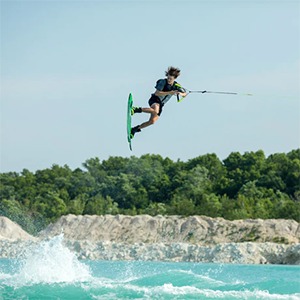Mastering the Art of Wakeboard Selection: Size and Weight Demystified

Choosing the right wakeboard can be a daunting task, especially for beginners. With so many options available in terms of size and weight capacity, it can be overwhelming to figure out which one is right for you. Luckily, with a little guidance, you can easily master the art of wakeboard selection. In this blog post, we’ll unravel the mystery behind size and weight capacity, so you can confidently choose the perfect wakeboard for your next adventure on the water. As a trusted authority on all things wakeboarding, Bart’s Water Sports has got you covered with expert tips and insights.
Understanding the Basics of Wakeboard Size and Weight Capacity
The size of a wakeboard is crucial as it directly impacts stability, maneuverability, and ease of riding. Generally, a longer board offers greater stability and is easier for beginners, while a shorter board allows for better control and is favored by experienced riders. The weight capacity, on the other hand, ensures the board performs optimally without sinking too deep into the water. It’s essential to choose a wakeboard that supports your weight range to maintain buoyancy and achieve a smooth ride. Together, these factors play a pivotal role in the overall wakeboarding experience.
How to Determine the Right Wakeboard Size for You
To determine the right wakeboard size for you, consider your weight first and foremost. Wakeboard sizes are generally recommended based on the rider’s weight because a properly sized board will offer the best balance of control, stability, and performance. Check the manufacturer’s size chart as a starting point. If you’re between sizes, lean towards a longer board if you’re a beginner for extra stability, or a shorter one if you’re more experienced and seeking maneuverability. Also, think about where you’ll be riding; larger boards can be better for open water with more chop, while smaller boards are ideal for smoother conditions or doing tricks.
Decoding the Wakeboard Weight Capacity
When it comes to wakeboard weight capacity, it’s not just about preventing the board from sinking. A wakeboard designed to support your weight will ensure that the board rides at the correct height in the water, facilitating easier starts, smoother rides, and more successful tricks. Exceeding the weight capacity can cause the board to sit too low in the water, making it difficult to maneuver and potentially leading to increased drag. Conversely, a rider significantly under the recommended weight may find the board difficult to control and less responsive. Always refer to the manufacturer’s specifications to ensure the best match for your weight.
The Role of Riding Style in Selecting Your Wakeboard
Your riding style significantly influences the type of wakeboard that will best suit you. For those inclined towards freeriding, a versatile board with a balanced blend of control and stability is ideal. On the other hand, wakeboarders focusing on park riding or hitting features might opt for a board with more flex and a durable base to withstand impacts. Competitive riders performing air tricks and requiring quick, responsive movements should consider a lighter board with advanced features designed for aerial dynamics. Ultimately, aligning your wakeboard choice with your preferred riding style enhances your performance and enjoyment on the water.
Assessing the Flexibility of Your Wakeboard: What It Means and Why It Matters
Flexibility in a wakeboard affects how it reacts to forces during rides and tricks. A board with high flexibility is better at absorbing impacts, making it ideal for park riders who frequently encounter obstacles. It allows for smoother landings and greater ease in performing tricks. Conversely, a stiffer board offers more speed and stability, suitable for riders focusing on carving and high-speed maneuvers. Understanding the level of flexibility that matches your riding preferences is crucial for optimizing your performance and enjoyment. This characteristic should be considered alongside size and weight capacity when selecting your ideal wakeboard.




